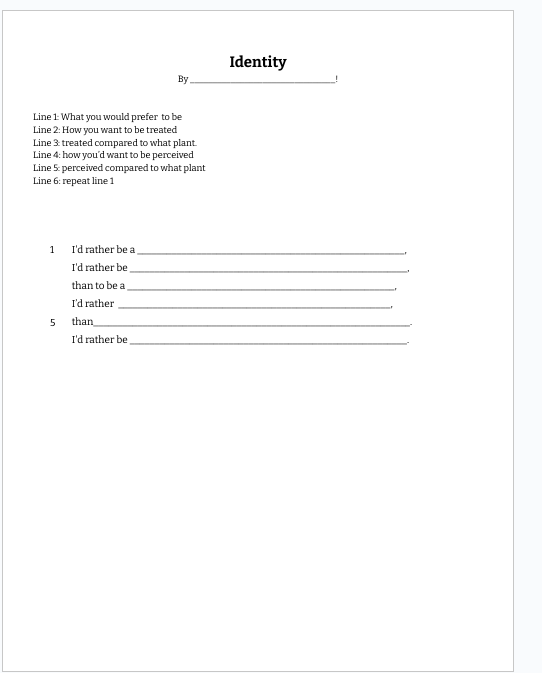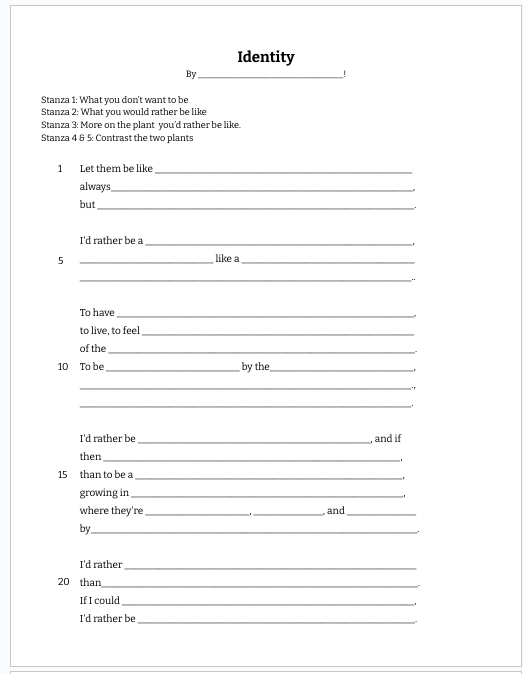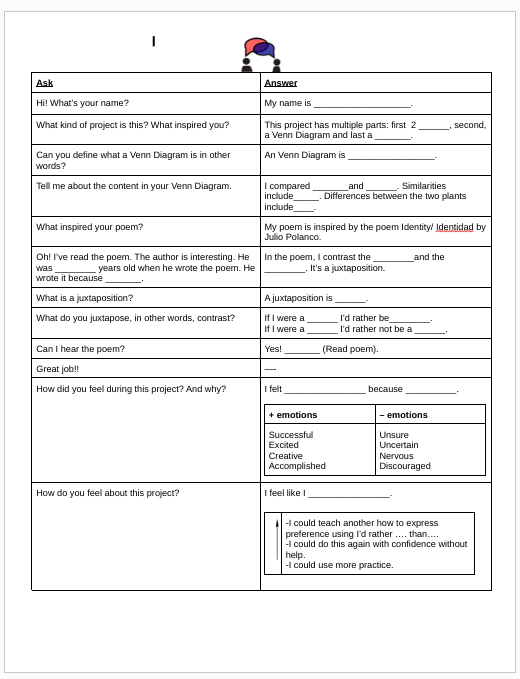As integrating computer science has taken root in my ELD classes, I constantly look for the next WIDA standards/ CS opportunity. My goal is to integrate a minimum of one computer science project a semester. My inspiration for this unit began with a seed–CodeVA’s bilingual snail mail issue #21 on plants & simulation* (Language for Science & CS).
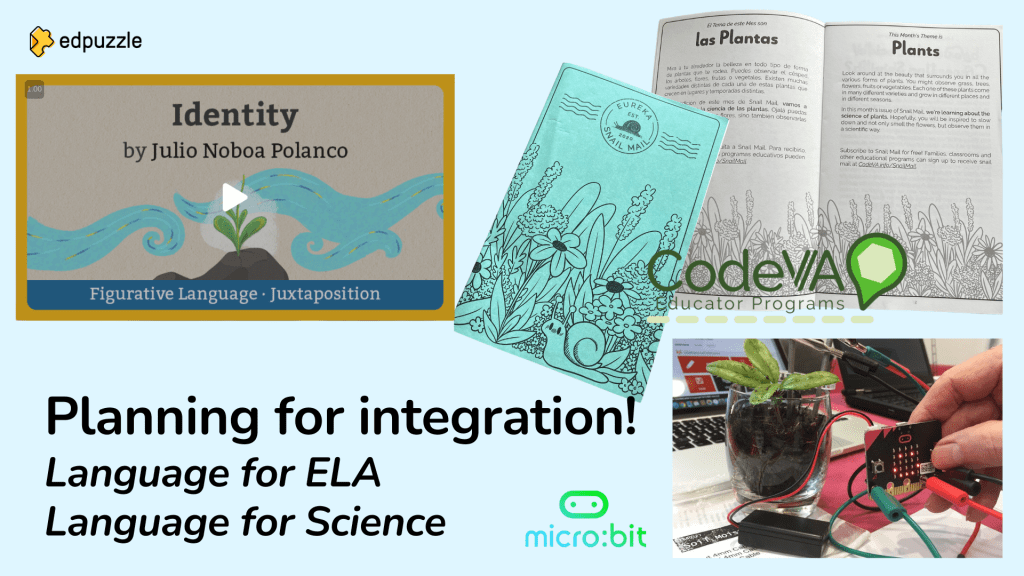
* CodeVA issues free bilingual, accessible booklets that students can have mailed to their homes. Who doesn’t love getting mail? Teachers can also use them, of course! Sign yourself up & encourage your students to sign up too!
The conditions for this unit’s germination were soon met! Edpuzzle’s featured video on Julio Noboa Polanco’s poem Identity/ Identidad for Hispanic heritage month (Language for ELA) was a perfect collab, and with Microsoft’s Make Code‘s project to create a self – watering plant with a small, programmable device Micro: Bits, we were ready to grow in our knowledge of plants/ germination conditions, poems/ identity, “I’d rather___ than___” preference sentence structures, and how computer science can aid in agriculture.
The unit was over three weeks. I’ve divided it into 3 parts.
Part 1: Prior Knowledge & Language for ELA: Julio Polanco’s poem Identity/ Identidad:
- The students will brainstorm and translate the names of known plants and create a class botany word bank.
- The students will diagram a named plant and generate 5 reasons why they would be them completing the frame “If I were a plant, I would be a _____.”
- The students will demonstrate an understanding of negation and diagram a named plant and generate 5 reasons why they would not be like the named plant by completing the frame “If I were a pant, I would not be a ______.”
- The students will demonstrate an understanding of a Venn Diagram and its use by completing a graphic organizer comparing and contrasting flowers and weeds.
- The students will read and demonstrate an understanding of text structure.
- The student will understand juxtaposition by comparing and contrasting plants they would or would not be like by using a Venn diagram.
- The students will rewrite a poem inspired by Polanco’s identidad to reflect their own identity.
- The students will verbally share their project by presenting to classmates.
Prior Knowledge/ Vocabulary Builder
- First, we brainstormed plants in both languages–looked up images and translations. I put them in a Quizlet set for us later to review. Daisy is margarita, in Spanish, you guys! A fun fact to impress your friends at Mexican.

- Second, I introduced the subjunctive: If I were a plant, I would be a _________. Students researched & drew the plant and wrote 5 descriptors why.
- Next, the negative: If I were a plant, I would not be a _________. Students researched and drew the plant and wrote 5 descriptors why they would NOT be that plant.
- Then I introduced Venn Diagrams. Note that it is important to describe what a graphic organizer is, how a Venn Diagram is a type of graphic organizer, and its purpose. For many of my students, this was their first encounter with a Venn diagram. We shaded each circle with a different colored pencil and the middle, overlapping part holding both colors. We wrote the word “differences” under the outside parts of the circle and similarities under the middle part. We co-constructed their first Venn Diagram. We brainstormed how a flower and a weed were similar and different. The topic was flowers and weeds, to preview Polanco’s Identity/ Identidad poem.
- Next, they independently created a second Venn diagram based on the two plant diagrams they created in prior lessons to demonstrate that they understood how to compare & contrast utilizing one.
Reading
- I generated interest–Polanco was 14 years old when he wrote this poem and it’s his most well known. Why did he write it? His girlfriend broke up with him!! How do you think he felt?
- Students read and reread his poem in Spanish and English. Advanced students only entered into the Edpuzzle video–I found it to be a little extensive for beginner/ intermediate ELs.
- Then with two different colored highlighters, they highlighted phrases/ words in one color that referred to the flower, in the other color that referred to the weed referencing the versions in two languages.
- We noticed his poem’s stanzas had organized themes: Stanza one, the flower. Stanza 2 & 3, the weed. Stanzas 4 & 5 comparisons between the flower and weed.
- We underlined the repeated line “I’d rather be______.” How many times did he use this?
- Then we circled “than” which follows “I’d rather be” in the second and third uses. We conducted a comparative linguistic study and considered the Spanish equivalent “Yo prefiero ….. que…”
- The students had created their own writing assignment with sentence stems!

Writing: Poems
- Beginning students completed the poem frame with the information from their original two diagrams. Upper intermediate/ advanced students completed the more extended poem frame.
- Kahoot reviewing then vs. than! I taught a trick– Than has an ‘a’ and comparison has an ‘a.’ Then has an ‘e’ and sequence has no ‘a’s, but ‘e’s.
Listening & Speaking: Round Robin Presentations
- Students presented their poems and diagrams to each other as a capstone to this part of the unit in a round robin- style presentation. They posted their two plant diagrams, the Venn diagram comparing the two, and their original poem based on Polanco’s Identity/ Identidad. They had four minutes to make their way through the language guide linked below and they’d present to the next classmate in another four minutes, and so own guided by the timer.
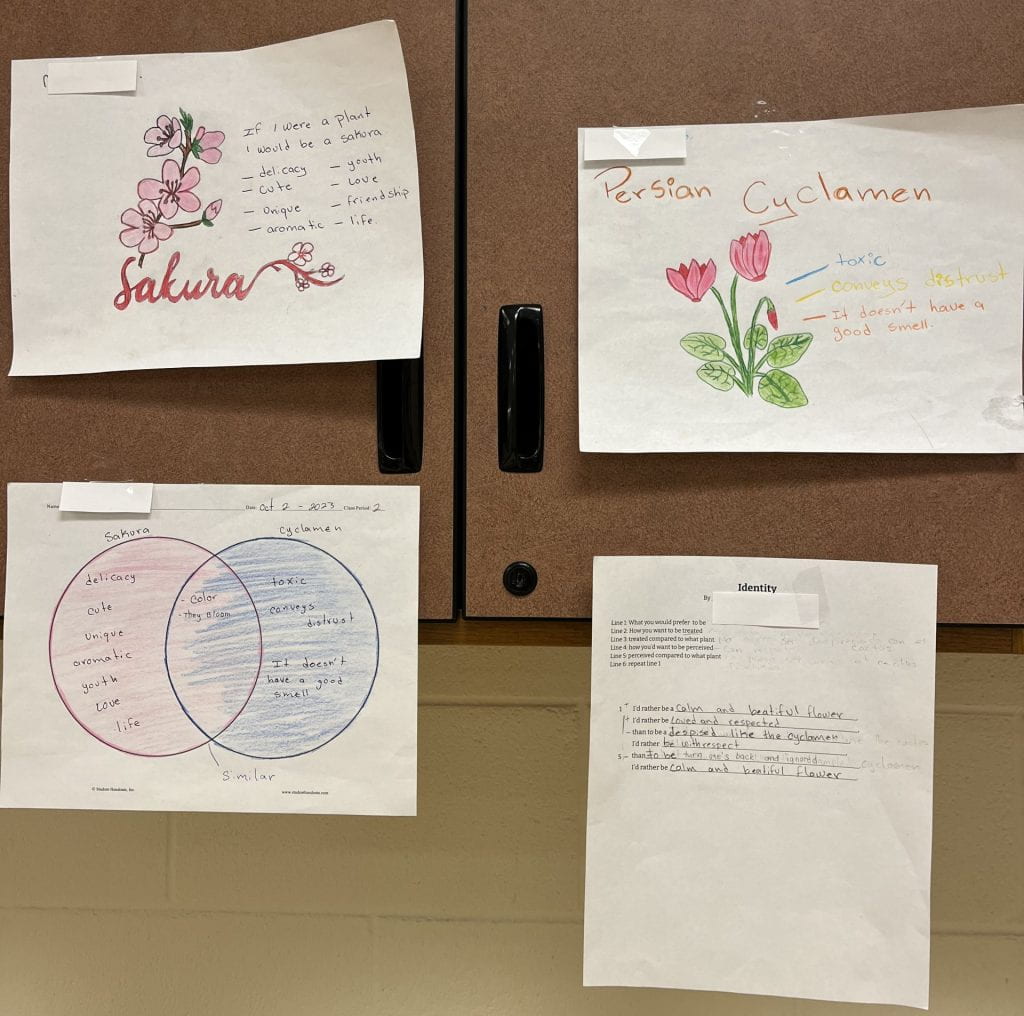
Feel free to use my materials below! Let me know if you implement this unit– I welcome feedback! Look for part 2 and 3 coming soon.
